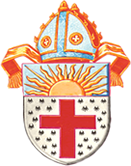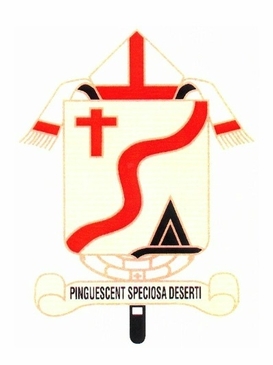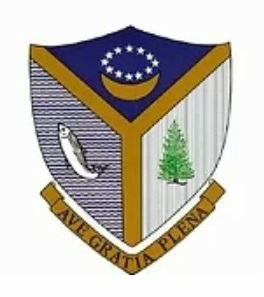Related Research Articles

The Cree are a North American Indigenous people. They live primarily in Canada, where they form one of the country's largest First Nations.

Chipewyan or Dënesųłinë́, often simply called Dëne, is the language spoken by the Chipewyan people of northwestern Canada. It is categorized as part of the Northern Athabaskan language family. It has nearly 12,000 speakers in Canada, mostly in Saskatchewan, Alberta, Manitoba and the Northwest Territories. It has official status only in the Northwest Territories, alongside 8 other aboriginal languages: Cree, Tlicho, Gwich'in, Inuktitut, Inuinnaqtun, Inuvialuktun, North Slavey and South Slavey.

The Diocese of Nova Scotia and Prince Edward Island is a diocese of the Ecclesiastical Province of Canada of the Anglican Church of Canada. It encompasses the provinces of Nova Scotia and Prince Edward Island and has two cathedrals: All Saints' in Halifax and St. Peter's in Charlottetown. Its de facto see city is Halifax, and its roughly 24 400 Anglicans distributed in 239 congregations are served by approximately 153 clergy and 330 lay readers according to the last available data. According to the 2001 census, 120,315 Nova Scotians identified themselves as Anglicans, while 6525 Prince Edward Islanders did the same.

The Diocese of Qu'Appelle in the Anglican Church of Canada lies in the southern third of the civil province of Saskatchewan and contains within its geographical boundaries some 50 per cent of the province's population of one million.
The Diocese of Toronto is an administrative division of the Anglican Church of Canada covering the central part of southern Ontario. It was founded in 1839 and is the oldest of the seven dioceses comprising the Ecclesiastical Province of Ontario. It has the most members of any Anglican diocese in Canada. It is also one of the biggest Anglican dioceses in the Americas in terms of numbers of parishioners, clergy and parishes. As of 2018, the diocese has around 230 congregations and ministries in 183 parishes, with approximately 54,000 Anglicans identified on parish rolls.
Treaty 10 was an agreement established beginning 19 August 1906, between King Edward VII and various First Nation band governments in northern Saskatchewan and a small portion of eastern Alberta. There were no Alberta-based First Nations groups signing on, but there were two First Nation bands from Manitoba, despite their location outside the designated treaty area. It is notable that despite appeals from peoples of unceded areas of Northern Manitoba and the Northwest Territories for treaty negotiations to begin, the government did not enter into the treaty process for almost 20 years. In 1879, Natives of Stanley, Lac la Ronge, and Pelican Narrows petitioned for a treaty due to the threat of starvation. In 1905, the granting of Saskatchewan with Provincial status galvanized the government to settle the issue of land rights in order to free up land for future government use. The Canadian government signed Treaty 10 with the First Nations. The territory covered almost 220,000 square kilometers and included Cree and Chipewyan First Nation tribe population. Like the other treaties, it requires the First Nations to surrender their Aboriginal Title for land claim and rights.

The Archdiocese of Edmonton is a Latin Church ecclesiastical territory or archdiocese in the Canadian civil province of Alberta. The archbishop's cathedral see is located in St. Joseph Cathedral, a minor basilica in Edmonton. The Archdiocese of Edmonton is the metropolitan see of its ecclesiastical province, which also contains two suffragan dioceses: the Dioceses of Calgary and Saint Paul in Alberta.
The Roman Catholic Archdiocese of Keewatin–Le Pas is a Roman Catholic archdiocese that includes parts of the Provinces of Manitoba, Saskatchewan, and Ontario and has the suffragan diocese of Churchill-Baie d'Hudson. The current archbishop is Murray Chatlain.

The Roman Catholic Archdiocese of Saint-Boniface is a Latin archdiocese in part of the civil Province of Manitoba in Canada. Despite having no suffragan dioceses, the archdiocese is nominally metropolitan and is an ecclesiastical province by itself. It is currently led by Archbishop Albert LeGatt.

The Bell of Batoche is a 20-pound (9.1 kg) silver-plated church bell believed to have been seized in 1885 as spoils of war from the Métis community of Batoche by soldiers from Ontario, following their victory in the Battle of Batoche over the North-West Rebellion. The bell was kept in Millbrook, Ontario, until 1991, when it was stolen from the Royal Canadian Legion hall. It resurfaced in 2013 in Métis hands. However, evidence suggesting the bell's actual origin was from Frog Lake emerged soon after.

The Roman Catholic Diocese of Grand Falls is a Latin suffragan in the Atlantic Canadian ecclesiastical province of the Metropolitan Archdiocese of St. John's, Newfoundland.
The Roman Catholic Diocese of Prince-Albert, in Saskatchewan, is a Latin suffragan in the western Canadian ecclesiastical province of the Metropolitan Archdiocese of Regina.
The Diocese of Huron is a diocese of the Ecclesiastical Province of Ontario of the Anglican Church of Canada. The diocese comprises just over 31,000 square kilometres in southwestern Ontario, sandwiched between Lake Huron and Lake Erie. Its See city is London, and its parish rolls of 50,000 are served by 177 congregations.

The Diocese of The Arctic is a diocese of the Ecclesiastical Province of Rupert's Land of the Anglican Church of Canada. It is by far the largest of the thirty dioceses in Canada, comprising almost 4,000,000 km2 (1,500,000 sq mi), or one-third the land mass of the country. As the name indicates, the diocese encompasses the Arctic region of Canada including the entirety of the Northwest Territories, Nunavut, and the Nunavik region of northern Quebec. The see city is Iqaluit, Nunavut, and the diocese's nearly 25,000 Anglicans are served by 46 parishes. The administrative offices of the diocese are located in Yellowknife, Northwest Territories.

The Diocese of Rupert's Land is a diocese of the Ecclesiastical Province of Rupert's Land of the Anglican Church of Canada. It is named for the historical British North American territory of Rupert's Land, which was contained within the original diocesan boundaries.
The Diocese of Saskatchewan is a diocese of the Ecclesiastical Province of Rupert's Land of the Anglican Church of Canada formed in 1874. Its headquarters are in Prince Albert, Saskatchewan. The Diocese of Saskatoon was split off from it in 1933.
The Mathias Colomb Cree Nation (MCCN) —also known as Mathias Colomb First Nation, Mathias Colomb (Cree) First Nation, and Pukatawagan/Mathias Colomb Cree Nation—is a remote First Nations community in northern Manitoba, located 210 km (130 mi) north of The Pas and 819 km (509 mi) northwest of Winnipeg, Manitoba.
James Settee, was of Swampy Cree descent. He was given the name James Settee when he was baptized in 1827. He was the second Native American ordained an Anglican priest; following Henry Budd. He married Sarah (Sally) Cook in 1835. He was ordained an Anglican priest and spent his career ministering to First Nations people of Canada. He was fluent in English, Cree and Ojibwe.
References
- ↑ "A Chronology of Our Ongoing Walk With Aboriginal Peoples". The Anglican Church of Canada. Retrieved 23 July 2012.
- ↑ "Bishop Arthurson". Diocese of Saskatchewan. Archived from the original on 2012-04-20. Retrieved 23 July 2012.
- ↑ Brown, Mary (February 12, 2008). "Canada's first aboriginal bishop to retire". Diocese of Saskatchewan. Archived from the original on 2016-03-04. Retrieved 23 July 2012.